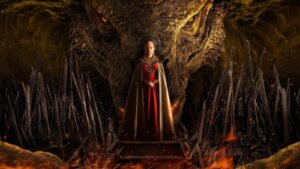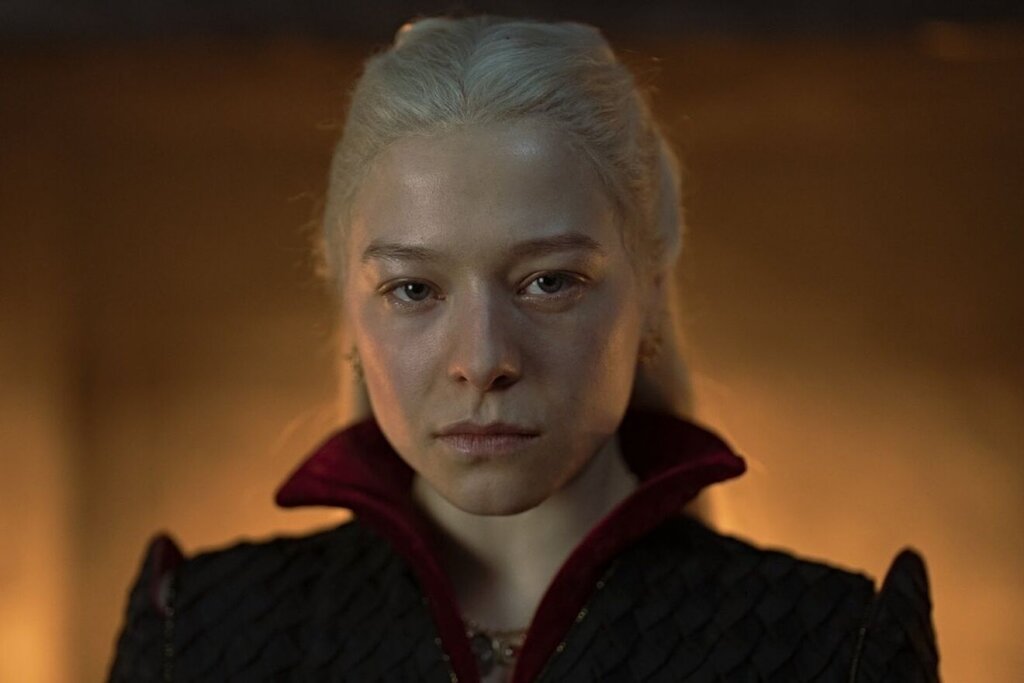House of the Dragon: A Story of Fathers and Daughters


Reviewed and approved by the psychologist Sergio De Dios González
House of the Dragon has managed to distance itself enough from Game of Thrones to retain its own identity. One of its many characteristic elements is how it exposes the conflicts between certain characters. As is the case of Princess Rhaenyra Targaryen, the protagonist. We’re going to analyze her character from a psychological point of view. However, be warned, as there’ll be a few spoilers.
House of the Dragon is a story of growth and maturity. The field of psychology proposes that parents and other childhood references play a determining role in a child’s development. In fact, much of Rhaenyra’s evolution is due to her complex and changing relationship with her father, King Viserys Targaryen. The same goes for her sordid relationship with her uncle, Daemon Targaryen.
Fathers and daughters in House of the Dragon
This idea could also be applied to other characters, like Alicent Hightower. Indeed, it’s clear that many of the dramatic elements of this series are based on the relationships between fathers and daughters. And the starting point of the relationship between Rhaenyra and Viserys couldn’t be rockier.
At the beginning of the series, the King makes the decision to precipitate the delivery of his son, even though it means sentencing his wife to death. This doesn’t translate into any specific conflict with Rhaenyra, but it does make it clear to the collective unconscious of Westeros. In these kinds of medieval universes, they saw children as nothing more than instruments of power. Therefore, the difference between having a male or female as offspring could mean the difference between peace and war.
Anyone who’s seen House of the Dragon knows that the birth didn’t go well for either the child or the mother. In fact, Viserys is forced to name his daughter, Rhaenyra, as the successor to the Iron Throne.
The King is aware that naming a woman heir could complicate everything. Even so, he bets his entire political legacy on a dream and a prophecy, the Song of Ice and Fire. It claims that the realm will only be able to stand against a threat from the White Walkers of the North if it’s led by a Targaryen. However, Viserys continues to believe that he can keep peace in his kingdom.
Carl Jung’s animus
Carl Gustav Jung‘s studies of archetypes and the collective unconscious can be useful in understanding the development of a character like Rhaenyra. Jung was a pupil of Sigmund Freud and he developed a concept known as animus, a Latin word meaning ‘spirit’. It concerned the “archetypal images of the eternal masculine in the unconscious of the woman that forms a link between the consciousness of the self and the collective unconscious, potentially opening a pathway to the self”.
In other words, the animus -or anima in the case of the eternal feminine, refers to references that crystallize a way of understanding the world. It doesn’t have to be a specific representation, but the most characteristic kinds focus on paternal references or other famous religious and idealized figures.
Princess Rhaneyra
Rhaneyra is presented as a princess who thinks more about riding a dragon than attending to the obligations of the Court. That’s the starting point. It’s no wonder her biggest inspiration is Uncle Daemon. He’s the irredeemable dragon rider and leader of the White Cloaks. Indeed, the King’s brother represents the most characteristic values of a family of conquerors like the Targaryens.
“The animus is formed by means of archetypal images of the eternal masculine in the unconscious of the woman that form a link between the consciousness of the self and the collective unconscious.”
-Carl Gustav Jung-
The figure of her father is rather different. He’s nicknamed the Peaceful, as he always wants to avoid conflict. It doesn’t matter that Driftmark is threatened by Triarchy pirates or that his own brother is suspected of conspiring against him. For Viserys, armed conflict is always the last option.
This disconnect with the conceptual framework of Targaryen makes Viserys’ relationship with Rhaenyra more complicated. She doesn’t understand why her father doesn’t send his dragons where they’re needed. Moreover, she doesn’t even understand why her father named her as his heir.
Defying her father
Rhaenyra’s two main relationships -those she maintains with her father and uncle- demonstrate the dichotomy of her inner conflict. As a matter of fact, this is the main dichotomy around which the entire series revolves. Peace and war. The rational and the passionate. The masculine and the feminine. The Song of Ice and Fire.
To start with, Rhaenyra chooses her Uncle Daemon’s side. This is represented in a physical way thanks to the sexual desire between the two and their subsequent marriage. It may seem somewhat sordid and aberrant, but the truth is that it was a way of demonstrating the evolution of the protagonist of the series. Girls weren’t to be messed with in Game of Thrones and House of the Dragon is no different.
Returning to Carl Jung’s ideas, it could be said that Rhaenyra embraces the animus, the eternal masculine. Her collective unconscious provides her with the answers she’s looking for to reach the path toward herself. In addition, marriage to her uncle allows her to strengthen the position of the Targaryen House in Westeros. So, what can go wrong?
The marriage of Rhaenyra and Daemon could be understood as a provocation toward her father, but the princess’s motivations seem noble and sincere. The problem is that it takes a while for her to realize that her decision goes far beyond who she shares a bedroom with.

Challenging the collective unconscious
Due to a strange infection, King Viserys dies. However, the planned coronation for Rhaenyra is thwarted and Prince Aegon, son of Viserys and Alicent Hightower, is named Protector of the Seven Kingdoms. After decades of relative peace, Westeros is split between those who remain loyal to Rhaenyra and those who prefer a male on the Iron Throne.
The time has come to make decisions, for Rhaeynra to employ everything she’s learned to date. That’s when she realizes how right her father was. Should everything have been done to keep the peace? Or, is it enough to seize back the throne by force and be left to reign over the ashes? Reason and legitimacy belong to Rhaenyra, no one can take them away from her. But reason shouldn’t mean making a decision that’ll harm all of Westeros.
“My brother was a slave to his omens and portents. Anything to make his feckless reign appear to have purpose. Dreams didn’t make us kings. Dragons did.”
-Daemon Targaryen-
Realizing her father was right
Many of her allies support the decision to forge alliances and consolidate her position. But her husband Daemon doesn’t quite agree. Moreover, the collective unconscious agrees with Rhaenyra’s uncle, the Targaryens must unleash their dragons and show who reigns in Westeros. However, Rhaenyra refuses to have her arm twisted.
Rhaenyra mentions the prophecy of Aegon the Conqueror and the Song of Ice and Fire. In fact, for the first time, she embraces her father’s values and challenges the collective unconscious. That’s when dragon’s fire comes out of Daemon’s mouth.”Dreams didn’t make us kings. Dragons did” he says to his wife as he chokes her as a warning.
The rightful queen realizes the decision she made in marrying Daemon. She knows she must first honor her father, then challenge the collective unconscious. She will return, as will the same dichotomy. Peace and war. The rational and the passionate. The masculine and the feminine. The Song of Ice and Fire.
All cited sources were thoroughly reviewed by our team to ensure their quality, reliability, currency, and validity. The bibliography of this article was considered reliable and of academic or scientific accuracy.
- Jung, Carl Gustav (2002 [2ª edición, 2ª reimpresión 2010]). Obra completa de Carl Gustav Jung. Volumen 9/1: Los arquetipos y lo inconsciente colectivo. Traduccion Carmen Gauger. Madrid: Editorial Trotta. ISBN 978-84-8164-524-8/ ISBN 978-84-8164-525-5.
- Jung, C. G. (1970). Arquetipos e inconsciente colectivo. In Arquetipos e inconsciente colectivo (pp. 182-182).
- Malinconico, A. & Tagliagambe, S. (2022). Pauli y Jung: Arquetipos e Inconsciente Colectivo | Psicología y Simbólica del Arquetipo | Hombre y Sus Símbolos | Relaciones Entre el Yo y el . . . Arquetipo del niño | Sombra (Spanish Edition). Independently published.
- Arquetipos del inconsciente colectivo. En: Jung, C., Obras completas de CG Jung, vol. 9, Parte 1. 2ª ed., Princeton University Press, 1968. 451 p. (pág. 3-41).
- La fenomenología del espíritu en los cuentos de hadas. Ill. El espíritu en los cuentos de hadas. En: Jung, C., Obras completas de CG Jung, vol. 9, Parte 1. 2ª ed., Princeton University Press, 1968. 451 p. (pág. 217-230).
This text is provided for informational purposes only and does not replace consultation with a professional. If in doubt, consult your specialist.








